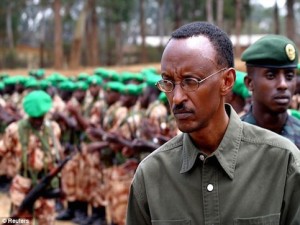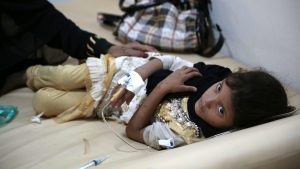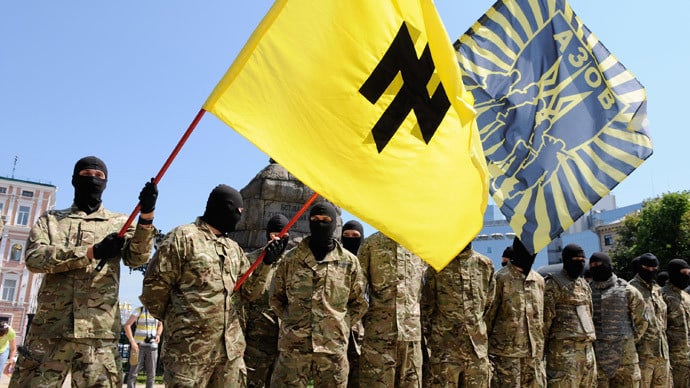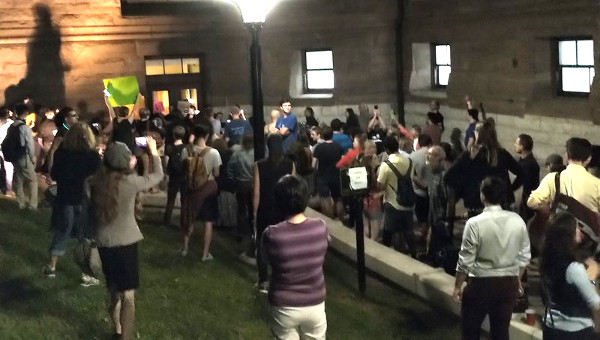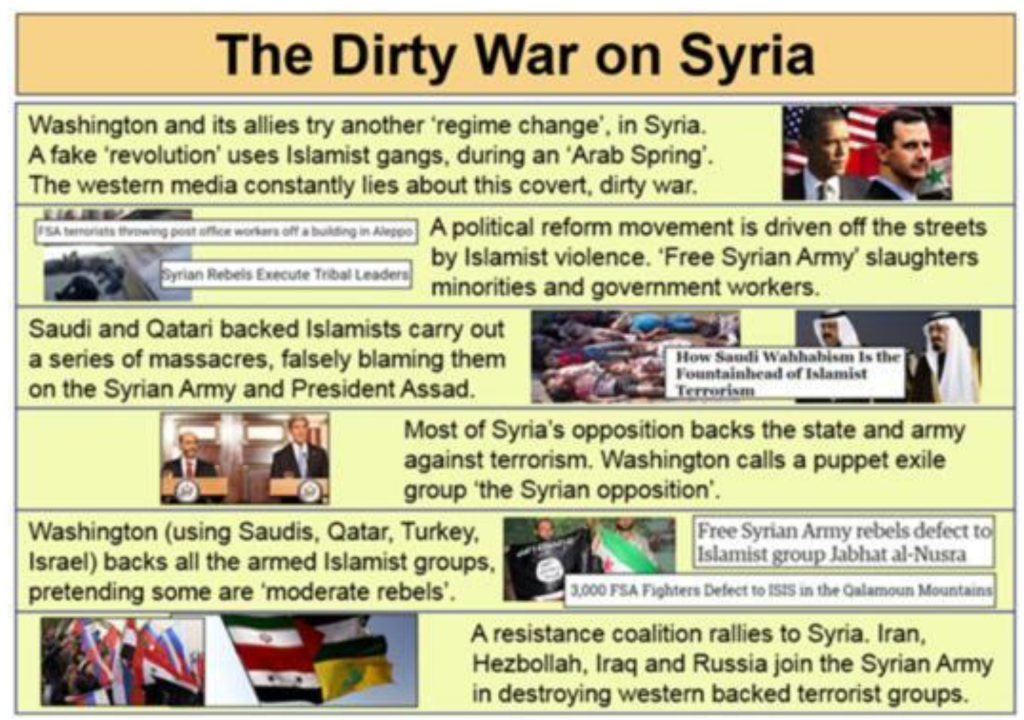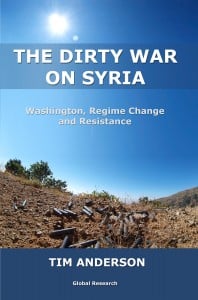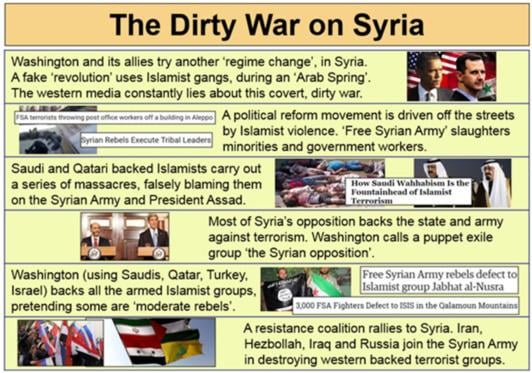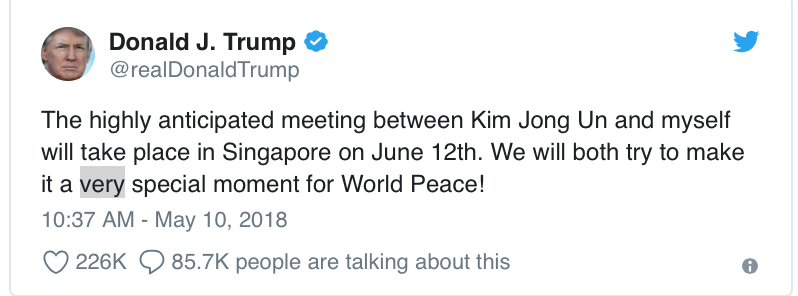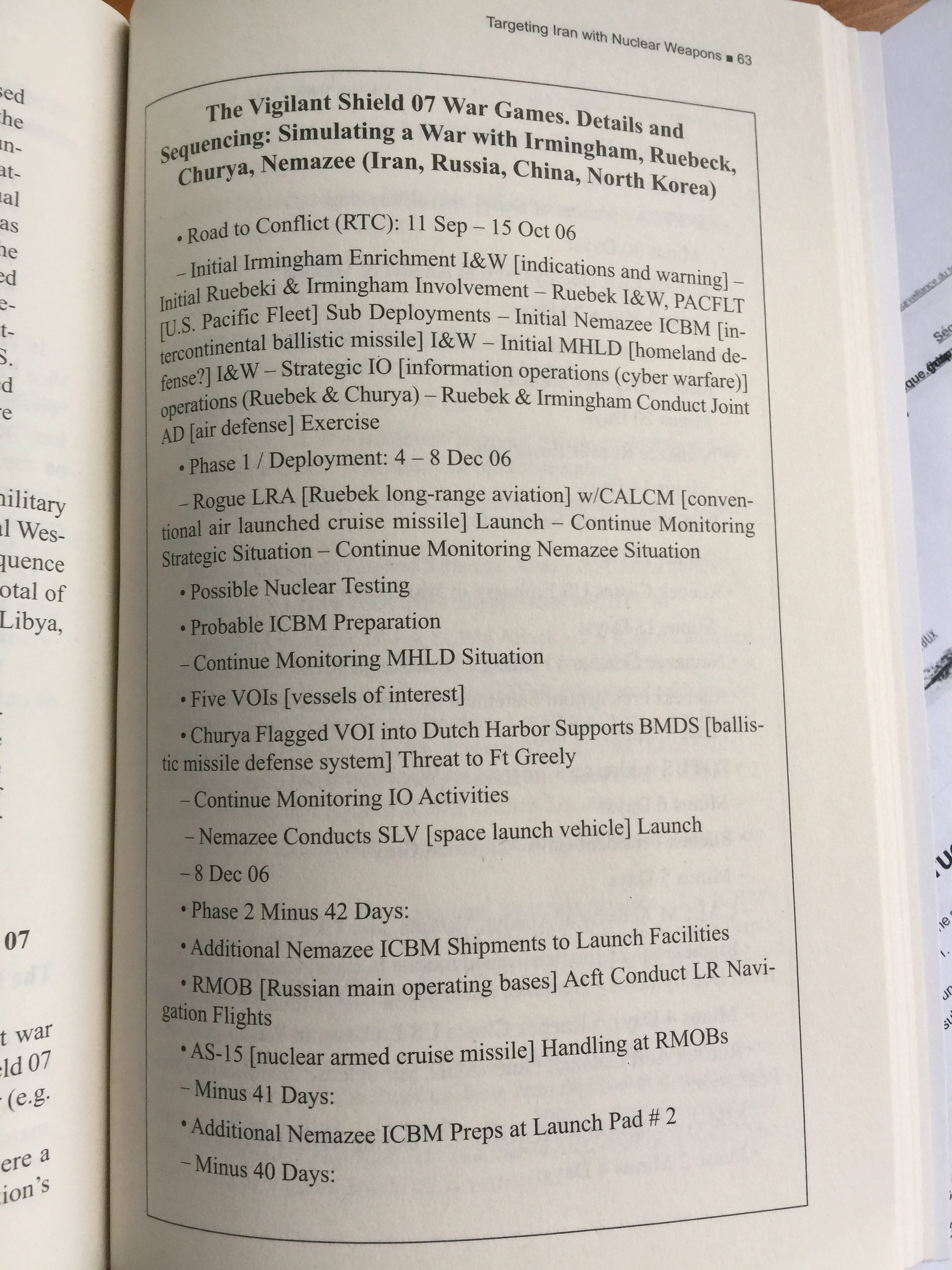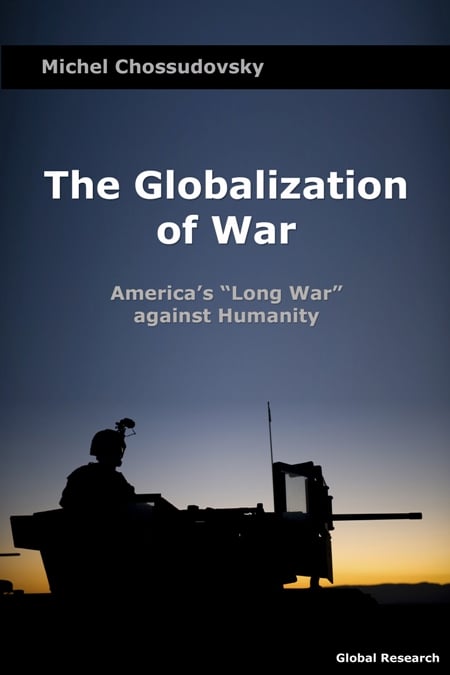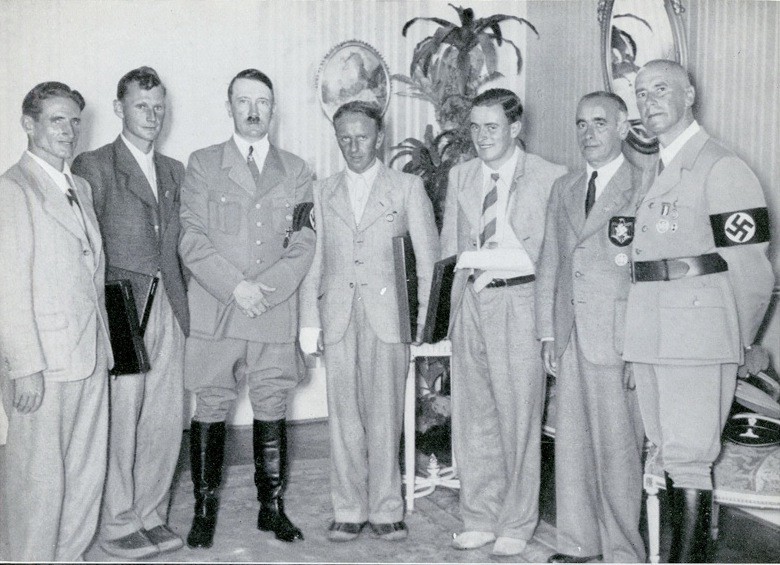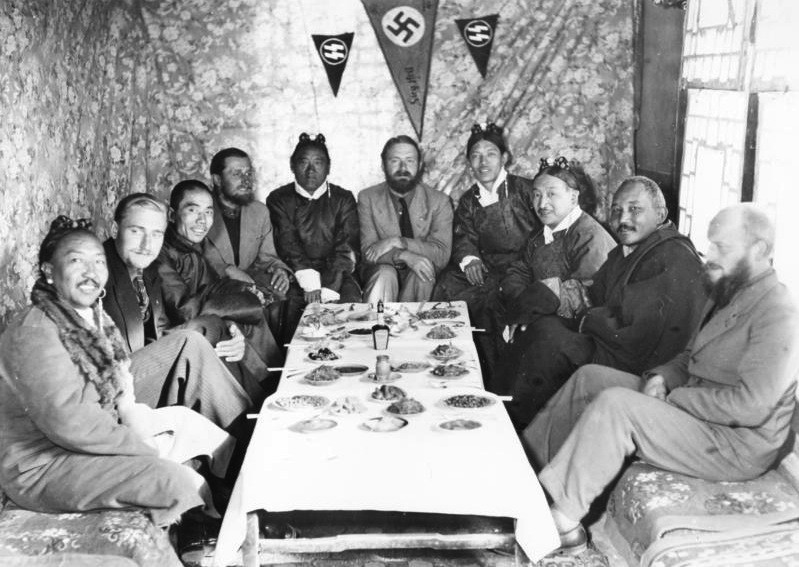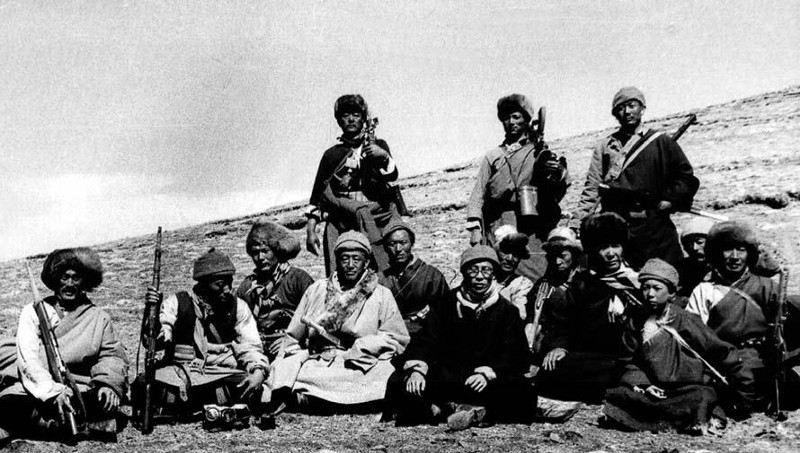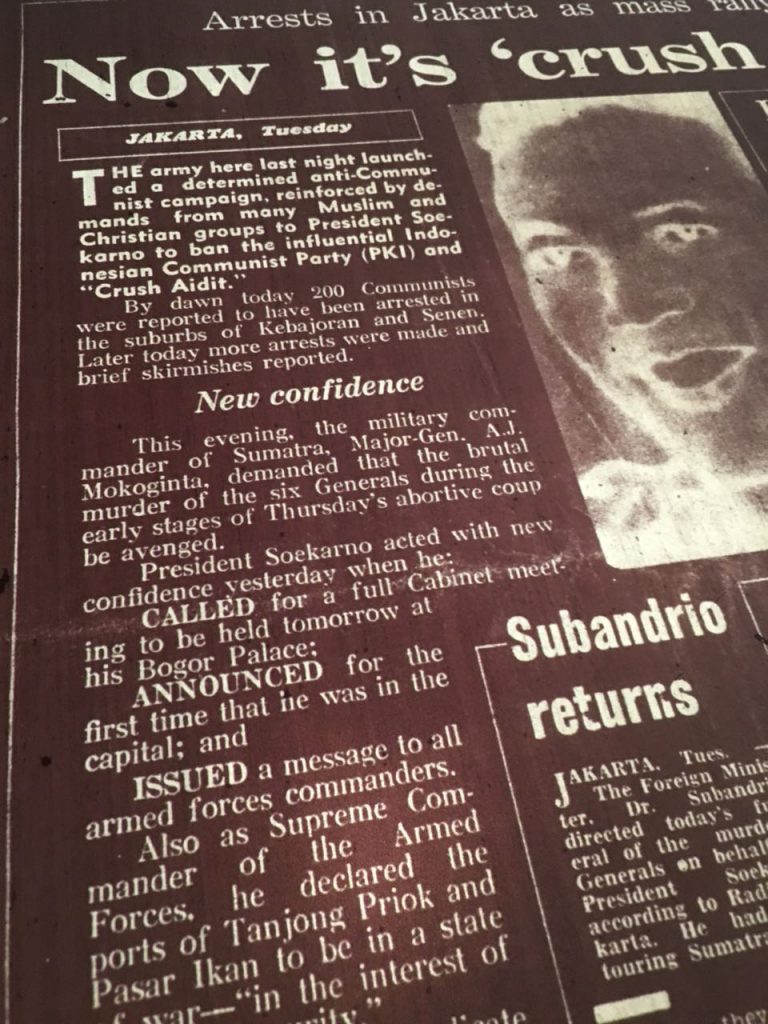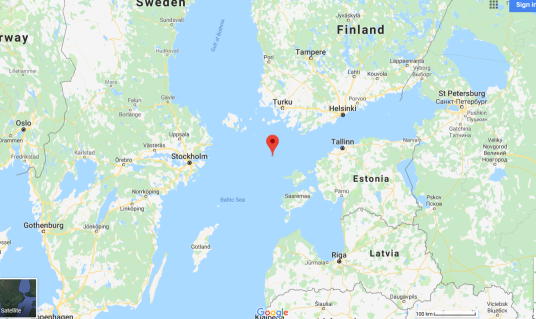First published by Global Research on September 12, 2015
The outlawing of narcotic drugs at the start of the Twentieth Century, the turning of the matter from public health to social control, coincided with American’s imperial Open Door policy and the belief that the government had an obligation to American industrialists to create markets in every nation in the world, whether those nations liked it or not.
Civic institutions, like public education, were required to sanctify this policy, while “security” bureaucracies were established to ensure the citizenry conformed to the state ideology. Secret services, both public and private, were likewise established to promote the expansion of private American economic interests overseas.
It takes a book to explain the economic foundations of the war on drugs, and the reasons behind the regulation of the medical, pharmaceutical and drug manufacturers industries. Suffice it to say that by 1943, the nations of the “free world” were relying on America for their opium derivatives, under the guardianship of Harry Anslinger, the Commissioner of the Federal Bureau of Narcotics (FBN).
Narcotic drugs are a strategic resource, and when Anslinger learned that Peru had built a cocaine factory, he and the Board of Economic Warfare confiscated its product before it could be sold to Germany or Japan. In another instance, Anslinger and his counterpart at the State Department prevented a drug manufacturer in Argentina from selling drugs to Germany.
At the same time, according to Douglas Clark Kinder and William O. Walker III in their article, “Stable Force In a Storm: Harry J. Anslinger and United States Narcotic Policy, 1930-1962,” Anslinger permitted “an American company to ship drugs to Southeast Asia despite receiving intelligence reports that French authorities were permitting opiate smuggling into China and collaborating with Japanese drug traffickers.”
Federal drug law enforcement’s relationship with the espionage establishment matured with the creation of CIA’s predecessor organization, the Office of Strategic Services. Prior to the Second World War, the FBN was the government agency most adept at conducting covert operations at home and abroad. As a result, OSS chief William Donovan asked Anslinger to provide seasoned FBN agents to help organize the OSS and train its agents to work undercover, avoid security forces in hostile nations, manage agent networks, and engage in sabotage and subversion.
The relationship expanded during the war, when FBN executives and agents worked with OSS scientists in domestic “truth drug” experiments involving marijuana. The “extra-legal” nature of the relationship continued after the war: when the CIA decided to test LSD on unsuspecting American citizens, FBN agents were chosen to operate the safehouses where the experiments were conducted.
The relationship was formalized overseas in 1951, when Agent Charlie Siragusa opened an office in Rome and began to develop the FBN’s foreign operations. In the 1950s, FBN agents posted overseas spent half their time doing “favors” for the CIA, such as investigating diversions of strategic materials behind the Iron Curtain. A handful of FBN agents were actually recruited into the CIA while maintaining their FBN credentials as cover.
Officially, FBN agents set limits. Siragusa, for example, claimed to object when the CIA asked him to mount a “controlled delivery” into the U.S. as a way of identifying the American members of a smuggling ring with Communist affiliations.
As Siragusa said,
“The FBN could never knowingly allow two pounds of heroin to be delivered into the United States and be pushed to Mafia customers in the New York City area, even if in the long run we could seize a bigger haul.” [For citations to this and other quotations/interviews, as well as documents, please refer to the author’s books, The Strength of the Wolf: The Secret History of America’s War on Drugs (Verso 2004) and The Strength of the Pack: The Personalities, Politics, and Espionage Intrigues that Shaped the DEA (TrineDay 2009). See also www.douglasvalentine.com]
And in 1960, when the CIA asked him to recruit assassins from his stable of underworld contacts, Siragusa again claimed to have refused. But drug traffickers, including, most prominently, Santo Trafficante Jr, were soon participating in CIA attempts to assassinate Fidel Castro.
As the dominant partner in the relationship, the CIA exploited its affinity with the FBN. “Like the CIA,” FBN Agent Robert DeFauw explained, “narcotic agents mount covert operations. We pose as members of the narcotics trade. The big difference is that we were in foreign countries legally, and through our police and intelligence sources, we could check out just about anyone or anything. Not only that, we were operational. So the CIA jumped in our stirrups.”
Jumping in the FBN’s stirrups afforded the CIA deniability, which is turn affords it impunity. To ensure that the CIA’s criminal activities are not revealed, narcotic agents are organized militarily within an inviolable chain of command. Highly indoctrinated, they blindly obey based on a “need to know.” This institutionalized ignorance sustains the illusion of righteousness, in the name of national security, upon which their motivation depends.
As FBN Agent Martin Pera explained, “Most FBN agents were corrupted by the lure of the underworld. They thought they could check their morality at the door – go out and lie, cheat, and steal – then come back and retrieve it. But you can’t. In fact, if you’re successful because you can lie, cheat, and steal, those things become tools you use in the bureaucracy.”
Institutionalized corruption began at headquarters, where FBN executives provided cover for CIA assets engaged in drug trafficking. In 1966, Agent John Evans was assigned as an assistant to enforcement chief John Enright.
“And that’s when I got to see what the CIA was doing,” Evans said. “I saw a report on the Kuomintang saying they were the biggest drug dealers in the world, and that the CIA was underwriting them. Air America was transporting tons of Kuomintang opium.” Evans bristled. “I took the report to Enright. He said, ‘Leave it here. Forget about it.’
“Other things came to my attention,” Evans added, “that proved that the CIA contributed to drug use in America. We were in constant conflict with the CIA because it was hiding its budget in ours, and because CIA people were smuggling drugs into the US. We weren’t allowed to tell, and that fostered corruption in the Bureau.”
Heroin smuggled by “CIA people” into the U.S. was channeled by Mafia distributors primarily to African-American communities. Local narcotic agents then targeted disenfranchised blacks as an easy way of preserving the white ruling class’s privileges.
“We didn’t need a search warrant,” explains New Orleans narcotics officer Clarence Giarusso. “It allowed us to meet our quota. And it was on-going. If I find dope on a black man, I can put him in jail for a few days. He’s got no money for a lawyer and the courts are ready to convict. There’s no expectation on the jury’s part that we have to make a case.
So rather than go cold turkey, the addict becomes an informant, which means I can make more cases in the neighborhood, which is all we’re interested in. We don’t care about Carlos Marcello or the Mafia. City cops have no interest in who brings dope in. That’s the job of the federal agents.
The Establishment’s race and class privileges have always been equated with national security, and FBN executives dutifully preserved the social order. Not until 1968, when Civil Rights reforms were imposed upon government bureaucracies, were black FBN agents allowed to become supervisors and manage white agents.
The war on drugs is largely a projection of two things: the racism that has defined America since its inception, and the government policy of allowing political allies to traffic in narcotics. These unstated but official policies reinforce the belief among CIA and drug law enforcement officials that the Bill of Rights is an obstacle to national security.
Blanket immunity from prosecution for turning these policies into practice engenders a belief among bureaucrats that they are above the law, which fosters corruption in other forms. FBN agents, for example, routinely “created a crime” by breaking and entering, planting evidence, using illegal wiretaps, and falsifying reports. They tampered with heroin, transferred it to informants for sale, and even murdered other agents who threatened to expose them.
All of this was secretly known at the highest level of government, and in 1965 the Treasury Department launched a corruption investigation of the FBN. Headed by Andrew Tartaglino, the investigation ended in 1968 with the resignation of 32 agents and the indictment of five. That same year the FBN was reconstructed in the Department of Justice as the Bureau of Narcotics and Dangerous Drugs (BNDD).
But, as Tartaglino said dejectedly, “The job was only half done.”
First Infestation
Richard Nixon was elected president based on a vow to restore “law and order” to America. To prove that it intended to keep that promise, the White House in 1969 launched Operation Intercept along the Mexican border. This massive “stop and search” operation so badly damaged relations with Mexico, however, that National Security Advisor Henry Kissinger formed the Ad Hoc Committee on Narcotics (the Heroin Committee), to coordinate drug policy and prevent further diplomatic disasters.
The Heroin Committee was composed of cabinet members represented by their deputies. James Ludlum represented CIA Director Richard Helms. A member of the CIA’s Counter-Intelligence staff, Ludlum had been the CIA’s liaison officer to the FBN since 1962.
“When Kissinger set up the Heroin Committee,” Ludlum recalled, “the CIA certainly didn’t take it seriously, because drug control wasn’t part of their mission.”
Indeed, as John Evans noted above, and as the government was aware, the CIA for years had sanctioned the heroin traffic from the Golden Triangle region of Burma, Thailand and Laos into South Vietnam as a way of rewarding top foreign officials for advancing U.S. policies. This reality presented the Nixon White House with a dilemma, given that addiction among U.S. troops in Vietnam was soaring, and that massive amounts of Southeast Asian heroin were being smuggled into the U.S., for use by middle-class white kids on the verge of revolution.
Nixon’s response was to make drug law enforcement part of the CIA’s mission. Although reluctant to betray the CIA’s clients in South Vietnam, Helms told Ludlum: “We’re going to break their rice bowls.”
This betrayal occurred incrementally. Fred Dick, the BNDD agent assigned to Saigon, passed the names of the complicit military officers and politicians to the White House. But, as Dick recalled, “Ambassador [Ellsworth] Bunker called a meeting in Saigon at which CIA Station Chief Ted Shackley appeared and explained that there was ‘a delicate balance.’ What he said, in effect, was that no one was willing to do anything.”
Meanwhile, to protect its global network of drug trafficking assets, the CIA began infiltrating the BNDD and commandeering its internal security, intelligence, and foreign operations branches. This massive reorganization required the placement of CIA officers in influential positions in every federal agency concerned with drug law enforcement.
CIA Officer Paul Van Marx, for example, was assigned as the U.S. Ambassador to France’s assistant on narcotics. From this vantage point, Van Marx ensured that BNDD conspiracy cases against European traffickers did not compromise CIA operations and assets. Van Marx also vetted potential BNDD assets to make sure they were not enemy spies.
The FBN never had more than 16 agents stationed overseas, but Nixon dramatically increased funding for the BNDD and hundreds of agents were posted abroad. The success of these overseas agents soon came to depend on CIA intelligence, as BNDD Director John Ingersoll understood.
BNDD agents immediately felt the impact of the CIA’s involvement in drug law enforcement operations within the United States. Operation Eagle was the flashpoint. Launched in 1970, Eagle targeted anti-Castro Cubans smuggling cocaine from Latin America to the Trafficante organization in Florida. Of the dozens of traffickers arrested in June, many were found to be members of Operation 40, a CIA terror organization active in the U.S., the Caribbean, Central and South America, and Mexico.
The revelation that CIA drug smuggling assets were operating within the U.S. led to the assignment of CIA officers as counterparts to mid-level BNDD enforcement officials, including Latin American division chief Jerry Strickler. Like Van Marks in France, these CIA officers served to protect CIA assets from exposure, while facilitating their recruitment as informants for the BNDD.
Many Cuban exiles arrested in Operation Eagle were indeed hired by the BNDD and sent throughout Latin America. They got “fantastic intelligence,” Strickler noted. But many were secretly serving the CIA and playing a double game.
Second Infestation
By 1970, BNDD Director Ingersoll’s inspections staff had gathered enough evidence to warrant the investigation of dozens of corrupt FBN agents who had risen to management positions in the BNDD. But Ingersoll could not investigate his top managers while simultaneously investigating drug traffickers. So he asked CIA Director Helms for help building a “counter-intelligence” capacity within the BNDD.
The result was Operation Twofold, in which 19 CIA officers were infiltrated into the BNDD, ostensibly to spy on corrupt BNDD officials. According to the BNDD’s Chief Inspector Patrick Fuller, “A corporation engaged in law enforcement hired three CIA officers posing as private businessmen to do the contact and interview work.”
CIA recruiter Jerry Soul, a former Operation 40 case officer, primarily selected officers whose careers had stalled due to the gradual reduction of forces in Southeast Asia. Those hired were put through the BNDD’s training course and assigned to spy on a particular regional director. No records were kept and some participants have never been identified.
Charles Gutensohn was a typical Twofold “torpedo.” Prior to his recruitment into the BNDD, Gutensohn had spent two years at the CIA’s base in Pakse, a major heroin transit point between Laos and South Vietnam. “Fuller said that when we communicated, I was to be known as Leo Adams for Los Angeles,” Gutensohn said. “He was to be Walter DeCarlo, for Washington, DC.”
Gutensohn’s cover, however, was blown before he got to Los Angeles. “Someone at headquarters was talking and everyone knew,” he recalled. “About a month after I arrived, one of the agents said to me, ‘I hear that Pat Fuller signed your credentials’.”
Twofold, which existed at least until 1974, was deemed by the Rockefeller Commission to have “violated the 1947 Act which prohibits the CIA’s participation in law enforcement activities.” It also, as shall be discussed later, served as a cover for clandestine CIA operations.
Third Infestation
The Nixon White House blamed the BNDD’s failure to stop international drug trafficking on its underdeveloped intelligence capabilities, a situation that opened the door to further CIA infiltration. In late 1970, CIA Director Helms arranged for his recently retired chief of continuing intelligence, E. Drexel Godfrey, to review BNDD intelligence procedures. Among other things, Godfrey recommended that the BNDD create regional intelligence units (RIUs) and an office of strategic intelligence (SI0).
The RIUs were up and running by 1971 with CIA officers often assigned as analysts, prompting BNDD agents to view the RIUs with suspicion, as repositories for Twofold torpedoes.
The SIO was harder to implement, given its arcane function as a tool to help top managers formulate plans and strategies “in the political sphere.” As SIO Director John Warner explained, “We needed to understand the political climate in Thailand in order to address the problem. We needed to know what kind of protection the Thai police were affording traffickers. We were looking for an intelligence office that could deal with those sorts of issues, on the ground, overseas.”
Organizing the SIO fell to CIA officers Adrian Swain and Tom Tripodi, both of whom were recruited into the BNDD. In April 1971 they accompanied Ingersoll to Saigon, where Station Chief Shackley briefed them. Through his CIA contacts, Swain obtained maps of drug-smuggling routes in Southeast Asia.
Upon their return to the U.S., Swain and Tripodi expressed frustration that the CIA had access to people capable of providing the BNDD with intelligence, but these people “were involved in narcotics trafficking and the CIA did not want to identify them.”
Seeking a way to circumvent the CIA, they recommended the creation of a “special operations or strategic operations staff” that would function as the BNDD’s own CIA “using a backdoor approach to gather intelligence in support of operations.” Those operations would rely on “longer range, deep penetration, clandestine assets, who remain undercover, do not appear during the course of any trial and are recruited and directed by the Special Operations agents on a covert basis.”
The White House approved the plan and in May 1971, Kissinger presented a $120 million drug control proposal, of which $50 million was earmarked for special operations. Three weeks later Nixon declared “war on drugs,” at which point Congress responded with funding for the SIO and authorization for the extra-legal operations Swain and Tripodi envisioned.
SIO Director Warner was given a seat on the U.S. Intelligence Board so the SIO could obtain raw intelligence from the CIA. But, in return, the SIO was compelled to adopt CIA security procedures. A CIA officer established the SIO’s file room and computer system; safes and steel doors were installed; and witting agents had to obtain CIA clearances.
Active-duty CIA officers were assigned to the SIO as desk officers for Europe and the Middle East, the Far East, and Latin America. Tripodi was assigned as chief of operations. Tripodi had spent the previous six years in the CIA’s Security Research Services, where his duties included the penetration of peace groups, as well as setting up firms to conduct black bag jobs. Notably, White House “Plumber” E. Howard Hunt inherited Tripodi’s Special Operations unit, which included several of the Watergate burglars.
Tripodi liaised with the CIA on matters of mutual interest and the covert collection of narcotics intelligence outside of routine BNDD channels. As part of his operational plan, code-named Medusa, Tripodi proposed that SIO agents hire foreign nationals to blow up contrabandista planes while they were refueling at clandestine air strips. Another proposal called for ambushing traffickers in America, and taking their drugs and money.
Enter Lucien Conein
The creation of the SIO coincided with the assignment of CIA officer Lucien Conein to the BNDD. As a member of the OSS, Conein had parachuted into France to form resistance cells that included Corsican gangsters. As a CIA officer, Conein in 1954 was assigned to Vietnam to organize anti-communist forces, and in 1963 achieved infamy as the intermediary between the Kennedy White House and the cabal of generals that murdered President Diem.
Historian Alfred McCoy has alleged that, in 1965, Conein arranged a truce between the CIA and drug trafficking Corsicans in Saigon. The truce, according to McCoy, allowed the Corsicans to traffic, as long as they served as contact men for the CIA. The truce also endowed the Corsicans with “free passage” at a time when Marseilles’ heroin labs were turning from Turkish to Southeast Asian morphine base.
Conein denied McCoy’s allegation and insisted that his meeting with the Corsicans was solely to resolve a problem caused by Daniel Ellsberg’s “peccadilloes with the mistress of a Corsican.”
It is impossible to know who is telling the truth. What is known is that in July 1971, on Howard Hunt’s recommendation, the White House hired Conein as an expert on Corsican drug traffickers in Southeast Asia. Conein was assigned as a consultant to the SIO’s Far East Asia desk. His activities will soon be discussed in greater detail.
The Parallel Mechanism
In September 1971, the Heroin Committee was reorganized as the Cabinet Committee for International Narcotics Control (CCINC) under Secretary of State William Rogers. CCINC’s mandate was to “set policies which relate international considerations to domestic considerations.” By 1975, its budget amounted to $875 million, and the war on drugs had become a most profitable industry.
Concurrently, the CIA formed a unilateral drug unit in its operations division under Seymour Bolten. Known as the Special Assistant to the Director for the Coordination of Narcotics, Bolten directed CIA division and station chiefs in unilateral drug control operations. In doing this, Bolten worked closely with Ted Shackley, who in 1972 was appointed head of the CIA’s Western Hemisphere Division. Bolten and Shackley had worked together in post-war Germany, as well as in anti-Castro Cubans operations in the early 1960s. Their collaboration would grease federal drug law enforcement’s skid into oblivion.
“Bolten screwed us,” BNDD’s Latin American division chief Jerry Strickler said emphatically. “And so did Shackley.”
Bolten “screwed” the BNDD, and the American judicial system, by setting up a “parallel mechanism” based on a computerized register of international drug traffickers and a CIA-staffed communications crew that intercepted calls from drug traffickers inside the U.S. to their accomplices around the world. The International Narcotics Information Network (INIS) was modeled on a computerized management information system Shackley had used to terrorize the underground resistance in South Vietnam.
Bolten’s staff also “re-tooled” dozens of CIA officers and slipped them into the BNDD. Several went to Lou Conein at the SIO for clandestine, highly illegal operations.
Factions within the CIA and military were opposed to Bolten’s parallel mechanism, but CIA Executive Director William Colby supported Bolten’s plan to preempt the BNDD and use its agents and informants for unilateral CIA purposes. The White House also supported the plan for political purposes related to Watergate. Top BNDD officials who resisted were expunged; those who cooperated were rewarded.
Bureau of Narcotics Covert Intelligence Network
In September 1972, DCI Helms (then immersed in Watergate intrigues), told BNDD Director Ingersoll that the CIA had prepared files on specific drug traffickers in Miami, the Florida Keys, and the Caribbean. Helms said the CIA would provide Ingersoll with assets to pursue the traffickers and develop information on targets of opportunity. The CIA would also provide operational, technical, and financial support.
The result was the Bureau of Narcotics Covert Intelligence Network (BUNCIN) whose methodology reflected Tripodi’s Medusa Plan and included “provocations, inducement to desertion, creating confusion and apprehension.”
Some BUNCIN intelligence activities were directed against “senior foreign government officials” and were “blamed on other government agencies or even on the intelligence services of other nations.” Other BUNCIN activities were directed against American civic and political groups.
BNDD officials managed BUNCIN’s legal activities, while Conein at the SIO managed its political and CIA aspects. According to Conein’s administrative deputy, Rich Kobakoff, “BUNCIN was an experiment in how to finesse the law. The end product was intelligence, not seizures or arrests.”
CIA officers Robert Medell and William Logay were selected to manage BUNCIN.
A Bay of Pigs veteran born in Cuba, Medell was initially assigned to the Twofold program. Medell was BUNCIN’s “covert” agent and recruited its principal agents. All of his assets had previously worked for the CIA, and all believed they were working for it again.
Medell started running agents in March 1973 with the stated goal of penetrating the Trafficante organization. To this end the BNDD’s Enforcement Chief, Andy Tartaglino, introduced Medell to Sal Caneba, a retired Mafioso who had been in business with Trafficante in the 1950s. Caneba in one day identified the head of the Cuban side of the Trafficante family, as well as its organizational structure.
But the CIA refused to allow the BNDD to pursue the investigation, because it had employed Trafficante in its assassination attempts against Fidel Castro, and because Trafficante’s Operation 40 associates were performing similar functions for the CIA around the world.
Medell’s Principal Agent was Bay of Pigs veteran Guillermo Tabraue, whom the CIA paid $1,400 a week. While receiving this princely sum, Tabraue participated in the “Alvarez-Cruz” drug smuggling ring.
Medell also recruited agents from Manuel Artime’s anti-Castro Cuban organization. Former CIA officer and White House “Plumber” Howard Hunt, notably, had been Artime’s case officer for years, and many members of Artime’s organization had worked for Ted Shackley while Shackley was the CIA’s station chief in Miami.
Bill Logay was the “overt” agent assigned to the BUNCIN office in Miami. Logay had been Shackley’s bodyguard in Saigon in 1969. From 1970-1971, Logay had served as a special police liaison and drug coordinator in Saigon’s Precinct 5. Logay was also asked to join Twofold, but claims to have refused.
Medell and Logay’s reports were hand delivered to BNDD headquarters via the Defense Department’s classified courier service. The Defense Department was in charge of emergency planning and provided BUNCIN agents with special communications equipment. The CIA supplied BUNCIN’s assets with forged IDs that enabled them to work for foreign governments, including Panama, Venezuela and Costa Rica.
Like Twofold, BUNCIN had two agendas. One, according to Chief Inspector Fuller, “was told” and had a narcotics mission. The other provided cover for the Plumbers. Orders for the domestic political facet emanated from the White House and passed through Conein to “Plumber” Gordon Liddy and his “Operation Gemstone” squad of exile Cuban terrorists from the Artime organization.
Enforcement chief Tartaglino was unhappy with the arrangement and gave Agent Ralph Frias the job of screening anti-Castro Cubans sent by the White House to the BNDD. Frias was assigned to International Affairs chief George Belk. When Nixon’s White House chief of staff H.R. “Bob” Haldeman sent over three Cubans, Frias interviewed them and realized they were “plants.” Those three were not hired, but, Frias lamented, many others were successfully infiltrated inside the BNDD and other federal agencies.
Under BUNCIN cover, CIA anti-Castro assets reportedly kidnapped and assassinated people in Colombia and Mexico. BUNCIN’s White House sponsors also sent CIA anti-Castro Cuban assets to gather dirt on Democratic politicians in Key West. With BUNCIN, federal drug law enforcement sank to new lows of political repression and corruption.
Novo Yardley
The Nixon White House introduced the “operations by committee” management method to ensure control over its illegal drug operations. But as agencies involved in drug law enforcement pooled resources, the BNDD’s mission was diluted and diminished.
And, as the preeminent agency in the federal government, the CIA not only separated itself from the BNDD as part of Bolten’s parallel mechanism, it rode off into the sunset on the BNDD’s horse. For example, at their introductory meeting in Mexico City in 1972, Ted Shackley told Latin American division chief Strickler to hand over all BNDD files, informant lists, and cable traffic.
According to Strickler, “Bad things happened.” The worst abuse was that the CIA allowed drug shipments into the U.S. without telling the BNDD.
“Individual stations allowed this,” SIO Director John Warner confirmed.
In so far as evidence acquired by CIA electronic surveillance is inadmissible in court, the CIA was able to protect its controlled deliveries into the U.S. merely by monitoring them. Numerous investigations had to be terminated as a result. Likewise, dozens of prosecutions were dismissed on national security grounds due to the participation of CIA assets operating around the world.
Strickler knew which CIA people were guilty of sabotaging cases in Latin America, and wanted to indict them. And so, at Bolten’s insistence, Strickler was reassigned. Meanwhile, CIA assets from Bolten’s unilateral drug unit were kidnapping and assassinating traffickers as part of Operation Twofold.
BNDD Director Ingersoll confirmed the existence of this covert facet of Twofold. Its purpose, he said, was to put people in deep cover in the U.S. to develop intelligence on drug trafficking, particularly from South America. The regional directors weren’t aware of it. Ingersoll said he got approval from Attorney General John Mitchell and passed the operation on to John Bartels, the first administrator of the DEA. He said the unit did not operate inside the U.S., which is why he thought it was legal.
Ingersoll added that he was surprised that no one from the Rockefeller Commission asked him about it.
Joseph DiGennaro’s entry into the covert facet of Operation Twofold began when a family friend, who knew CIA officer Jim Ludlum, suggested that he apply for a job with the BNDD. Then working as a stockbroker in New York, DiGennaro met Fuller in August 1971 in Washington. Fuller gave DiGennaro the code name Novo Yardley, based on his posting in New York, and as a play on the name of the famous codebreaker.
After DiGennaro obtained the required clearances, he was told that he and several other recruits were being “spun-off” from Twofold into the CIA’s “operational” unit. The background check took 14 months, during which time he received intensive combat and trade-craft training.
In October 1972 he was sent to New York City and assigned to an enforcement group as a cover. His paychecks came from BNDD funds, but the program was reimbursed by the CIA through the Bureau of Mines. The program was authorized by the “appropriate” Congressional committee.
DiGennaro’s unit was managed by the CIA’s Special Operations Division in conjunction with the military, which provided assets within foreign military services to keep ex-filtration routes (air corridors and roads) open. The military cleared air space when captured suspects were brought into the U.S. DiGennaro spent most of his time in South America, but the unit operated worldwide. The CIA unit numbered about 40 men, including experts in printing, forgery, maritime operations, and telecommunications.
DiGennaro would check with Fuller and take sick time or annual leave to go on missions. There were lots of missions. As his BNDD group supervisor in New York said, “Joey was never in the office.”
The job was tracking down, kidnapping, and, if they resisted, killing drug traffickers. Kidnapped targets were incapacitated by drugs and dumped in the U.S. As DEA Agent Gerry Carey recalled, “We’d get a call that there was ‘a present’ waiting for us on the corner of 116th Street and Sixth Avenue. We’d go there and find some guy, who’d been indicted in the Eastern District of New York, handcuffed to a telephone pole. We’d take him to a safe house for questioning and, if possible, turn him into an informer. Sometimes we’d have him in custody for months. But what did he know?”
If you’re a Corsican drug dealer in Argentina, and men with police credentials arrest you, how do you know it’s a CIA operation? DiGennaro’s last operation in 1977 involved the recovery of a satellite that had fallen into a drug dealer’s hands. Such was the extent of the CIA’s “parallel mechanism.”
The Dirty Dozen
With the formation of the Drug Enforcement Administration in July 1973, BUNCIN was renamed the DEA Clandestine Operations Network (DEACON 1). A number of additional DEACONs were developed through Special Field Intelligence Programs (SFIP). As an extension of BUNCIN, DEACON 1 developed intelligence on traffickers in Costa Rica, Ohio and New Jersey; politicians in Florida; terrorists and gun runners; the sale of boats and helicopters to Cuba; and the Trafficante organization.
Under DEA chief John Bartels, administrative control fell under Enforcement Chief George Belk and his Special Projects assistant Philip Smith. Through Belk and Smith, the Office of Special Projects had become a major facet of Bolten’s parallel mechanism. It housed the DEA’s air wing (staffed largely by CIA officers), conducted “research programs” with the CIA, provided technical aids and documentation to agents, and handled fugitive searches.
As part of DEACON 1, Smith sent covert agent Bob Medell “to Caracas or Bogota to develop a network of agents.” As Smith noted in a memorandum, reimbursement for Medell “is being made in backchannel fashion to CIA under payments to other agencies and is not counted as a position against us.”
Thoroughly suborned by Bolten and the CIA, DEA Administrator Bartels established a priority on foreign clandestine narcotics collection. And when Belk proposed a special operations group in intelligence, Bartels immediately approved it. In March 1974, Belk assigned the group to Lou Conein.
As chief of the Intelligence Group/Operations (IGO), Conein administered the DEA Special Operations Group (DEASOG), SFIP and National Intelligence Officers (NIO) programs. The chain of command, however, was “unclear” and while Medell reported administratively to Smith, Conein managed operations through a separate chain of command reaching to William Colby, who had risen to the rank of CIA Director concurrent with the formation of the DEA.
Conein had worked for Colby for many years in Vietnam, for through Colby he hired a “dirty dozen” CIA officers to staff DEASOG. As NIOs (not regular gun-toting DEA agents), the DEASOG officers did not buy narcotics or appear in court, but instead used standard CIA operating procedures to recruit assets and set up agent networks for the long-range collection of intelligence on trafficking groups. They had no connection to the DEA and were housed in a safe house outside headquarters in downtown Washington, DC.
The first DEASOG recruits were CIA officers Elias P. Chavez and Nicholas Zapata. Both had paramilitary and drug control experience in Laos. Colby’s personnel assistant Jack Mathews had been Chavez’s case officer at the Long Thien base, where General Vang Pao ran his secret drug-smuggling army under Ted Shackley’s auspices from 1966-1968.
A group of eight CIA officers followed: Wesley Dyckman, a Chinese linguist with service in Vietnam, was assigned to San Francisco. Louis J. Davis, a veteran of Vietnam and Laos, was assigned to the Chicago Regional Intelligence Unit. Christopher Thompson from the CIA’s Phoenix Program in Vietnam went to San Antonio. Hugh E. Murray, veteran of Pakse and Bolivia (where he participated in the capture of Che Guevara), was sent to Tucson. Thomas D. McPhaul had worked with Conein in Vietnam, and was sent to Dallas. Thomas L. Briggs, a veteran of Laos and a friend of Shackley’s, went to Mexico. Vernon J. Goertz, a Shackley friend who had participated in the Allende coup, went to Venezuela. David A. Scherman, a Conein friend and former manager of the CIA’s interrogation center in Da Nang, was sent to sunny San Diego.
Gary Mattocks, who ran CIA counter-terror teams in Vietnam’s Delta, and interrogator Robert Simon were the eleventh and twelfth members. Terry Baldwin, Barry Carew and Joseph Lagattuta joined later.
According to Davis, Conein created DEASOG specifically to do Phoenix program-style jobs overseas: the type where a paramilitary officer breaks into a trafficker’s house, takes his drugs, and slits his throat. The NIOs were to operate overseas where they would target traffickers the police couldn’t reach, like a prime minister’s son or the police chief in Acapulco if he was the local drug boss. If they couldn’t assassinate the target, they would bomb his labs or use psychological warfare to make him look like he was a DEA informant, so his own people would kill him.
The DEASOG people “would be breaking the law,” Davis observed, “but they didn’t have arrest powers overseas anyway.”
Conein envisioned 50 NIOs operating worldwide by 1977. But a slew of Watergate-related scandals forced the DEA to curtail its NIO program and reorganize its covert operations staff and functions in ways that have corrupted federal drug law enforcement beyond repair.
Assassination Scandals
The first scandal focused on DEACON 3, which targeted the Aviles-Perez organization in Mexico. Eli Chavez, Nick Zapata and Barry Carew were the NIOs assigned.
A veteran CIA officer who spoke Spanish, Carew had served as a special police adviser in Saigon before joining the BNDD. Carew was assigned as Conein’s Latin American desk officer and managed Chavez and Zapata (aka “the Mexican Assassin”) in Mexico. According to Chavez, a White House Task Force under Howard Hunt had started the DEACON 3 case. The Task force provided photographs of the Aviles Perez compound in Mexico, from whence truckloads of marijuana were shipped to the U.S.
Funds were allotted in February 1974, at which point Chavez and Zapata traveled to Mexico City as representatives of the North American Alarm and Fire Systems Company. In Mazatlán, they met with Carew, who stayed at a fancy hotel and played tennis every day, while Chavez and Zapata, whom Conein referred to as “pepper-bellies,” fumed in a flea-bag motel.
An informant arranged for Chavez, posing as a buyer, to meet Perez. A deal was struck, but DEA chief John Bartels made the mistake of instructing Chavez to brief the DEA’s regional director in Mexico City before making “the buy.”
At this meeting, the DEACON 3 agents presented their operational plan. But when the subject of “neutralizing” Perez came up, analyst Joan Banister took this to mean assassination. Bannister reported her suspicions to DEA headquarters, where the anti-CIA faction leaked her report to Washington Post columnist Jack Anderson.
Anderson’s allegation that the DEA was providing cover for a CIA assassination unit included revelations that the Senate had investigated IGO chief Conein for shopping around for assassination devices, like exploding ashtrays and telephones. Conein managed to keep his job, but the trail led to his comrade from the OSS, Mitch Werbell.
A deniable asset Conein used for parallel operations, Werbell had tried to sell several thousand silenced machine pistols to DEACON 1 target Robert Vesco, then living in Costa Rica surrounded by drug trafficking Cuban exiles in the Trafficante organization. Trafficante was also, at the time, living in Costa Rica as a guest of President Figueres whose son had purchased weapons from Werbell and used them to arm a death squad he formed with DEACON 1 asset Carlos Rumbault, a notorious anti-Castro Cuban terrorist and fugitive drug smuggler.
Meanwhile, in February 1974, DEA Agent Anthony Triponi, a former Green Beret and member of Operation Twofold, was admitted to St. Luke’s Hospital in New York “suffering from hypertension.” DEA inspectors found Triponi in the psychiatric ward, distraught because he had broken his “cover” and now his “special code” would have to be changed.
Thinking he was insane, the DEA inspectors called former chief inspector Patrick Fuller in California, just to be sure. As it turned out, everything Triponi had said about Twofold was true! The incredulous DEA inspectors called the CIA and were stunned when they were told: “If you release the story, we will destroy you.”
By 1975, Congress and the Justice Department were investigating the DEA’s relations with the CIA. In the process they stumbled on, among other things, plots to assassinate Torrijos and Noriega in Panama, as well as Tripodi’s Medusa Program.
In a draft report, one DEA inspector described Medusa as follows: “Topics considered as options included psychological terror tactics, substitution of placebos to discredit traffickers, use of incendiaries to destroy conversion laboratories, and disinformation to cause internal warfare between drug trafficking organizations; other methods under consideration involved blackmail, use of psychopharmacological techniques, bribery and even terminal sanctions.”
The Cover-Up
Despite the flurry of investigations, Nixon’s successor, Gerald Ford, reconfirmed the CIA’s narcotic intelligence collection arrangement with DEA, and the CIA continued to have its way. Much of its success is attributed to Seymour Bolten, whose staff handled “all requests for files from the Church Committee,” which concluded that allegations of drug smuggling by CIA assets and proprietaries “lacked substance.”
The Rockefeller Commission likewise gave the CIA a clean bill of health, falsely stating that the Twofold inspections project was terminated in 1973. The Commission completely covered-up the existence of the operation unit hidden within the inspections program.
Ford did task the Justice Department to investigate “allegations of fraud, irregularity, and misconduct” in the DEA. The so-called DeFeo investigation lasted through July 1975, and included allegations that DEA officials had discussed killing Omar Torrijos and Manuel Noriega. In March 1976, Deputy Attorney General Richard Thornburgh announced there were no findings to warrant criminal prosecutions.
In 1976, Congresswoman Bella Abzug submitted questions to new Director of Central Intelligence George H.W. Bush, about the CIA’s central role in international drug trafficking. Bush’s response was to cite a 1954 agreement with the Justice Department gave the CIA the right to block prosecution or keep its crimes secret in the name of national security.
In its report, the Abzug Committee said: “It was ironic that the CIA should be given responsibility of narcotic intelligence, particularly since they are supporting the prime movers.”
The Mansfield Amendment of 1976 sought to curtail the DEA’s extra-legal activities abroad by prohibiting agents from kidnapping or conducting unilateral actions without the consent of the host government. The CIA, of course, was exempt and continued to sabotage DEA cases against its movers, while further tightening its stranglehold on the DEA’s enforcement and intelligence capabilities.
In 1977, the DEA’s Assistant Administrator for Enforcement sent a memo, co-signed by the six enforcement division chiefs, to DEA chief Peter Bensinger. As the memo stated, “All were unanimous in their belief that present CIA programs were likely to cause serious future problems for DEA, both foreign and domestic.”
They specifically cited controlled deliveries enabled by CIA electronic surveillance and the fact that the CIA “will not respond positively to any discovery motion.” They complained that “Many of the subjects who appear in these CIA- promoted or controlled surveillances regularly travel to the United States in furtherance of their trafficking activities.” The “de facto immunity” from prosecution enabled the CIA assets to “operate much more openly and effectively.”
But then DEA chief Peter Bensinger suffered the CIA at the expense of America’s citizens and the DEA’s integrity. Under Bensinger the DEA created its CENTAC program to target drug trafficking organization worldwide through the early 1980s. But the CIA subverted the CENTAC: as its director Dennis Dayle famously said, “The major targets of my investigations almost invariably turned out to be working for the CIA.”
Murder and Mayhem
DEACON 1 inherited BUNCIN’s anti-Castro Cuban assets from Brigade 2506, which the CIA organized to invade Cuba in 1960. Controlled by Nixon’s secret political police, these CIA assets, operating under DEA cover, had parallel assignments involving “extremist groups and terrorism, and information of a political nature.”
Noriega and Moises Torrijos in Panama were targets, as was fugitive financier and Nixon campaign contributor Robert Vesco in Costa Rica, who was suspected of being a middle man in drug and money-laundering operations of value to the CIA.
DEACON 1’s problems began when overt agent Bill Logay charged that covert agent Bob Medell’s anti-Castro Cuban assets had penetrated the DEA on behalf of the Trafficante organization. DEACON 1 secretary Cecelia Plicet fanned the flames by claiming that Conein and Medell were using Principal Agent Tabraue to circumvent the DEA.
In what amounted to an endless succession of controlled deliveries, Tabraue was financing loads of cocaine and using DEACON 1’s Cuban assets to smuggle them into the U.S. Plicet said that Medell and Conein worked for “the other side” and wanted the DEA to fail. These accusations prompted an investigation, after which Logay was reassigned to inspections and Medell was reassigned and replaced by Gary Mattocks, an NIO member of the Dirty Dozen.
According to Mattocks, Shackley helped Colby set up DEASOG and brought in “his” people, including Tom Clines, whom Shackley placed in charge of the CIA’s Caribbean operations. Clines, like Shackley and Bolten, knew all the exile Cuban terrorists and traffickers on the DEASOG payroll. CIA officer Vernon Goertz worked for Clines in Caracas as part of the CIA’s parallel mechanism under DEASOG cover.
As cover for his DEACON 1 activities, Mattocks set up a front company designed to improve relations between Cuban and American businessmen. Meanwhile, through the CIA, he recruited members of the Artime organization including Watergate burglars Rolando Martinez and Bernard Barker, as well as Che Guevara’s murderer, Felix Rodriguez. These anti-Castro terrorists were allegedly part of an Operation 40 assassination squad that Shackley and Clines employed for private as well as professional purposes.
In late 1974, DEACON 1 crashed and burned when interrogator Robert Simon’s daughter was murdered in a drive-by shooting by crazed anti-Castro Cubans. Simon at the time was managing the CIA’s drug data base and had linked the exile Cuban drug traffickers with “a foreign terrorist organization.” As Mattocks explained, “It got bad after the Brigaders found out Simon was after them.”
None of the CIA’s terrorists, however, were ever arrested. Instead, Conein issued a directive prohibiting DEACON 1 assets from reporting on domestic political affairs or terrorist activities and the tragedy was swept under the carpet for reasons of national security.
DEACON 1 unceremoniously ended in 1975 after Agent Fred Dick was assigned to head the DEA’s Caribbean Basin Group. In that capacity Dick visited the DEACON 1 safe house and found, in his words, “a clandestine CIA unit using miscreants from Bay of Pigs, guys who were blowing up planes.” Dick hit the ceiling and in August 1975 DEACON I was terminated.
No new DEACONs were initiated and the others quietly ran their course. Undeterred, the CIA redeployed its anti-Castro Cuban miscreant assets, some of whom established the terror organization CORU in 1977. Others would go to work for Marine Lt. Col. Oliver North, a key National Security Council aide under President Ronald Reagan in the Iran-Contra drug and terror network.
Conein’s IGO was disbanded in 1976 after a grand jury sought DEACON I intelligence regarding several drug busts. But CIA acquired intelligence cannot be used in prosecutions, and the CIA refused to identify its assets in court, with the result that 27 prosecutions were dismissed on national security grounds.
Gary Mattocks was thereafter unwelcomed in the DEA. But his patron Ted Shackley had become DCI George Bush’s assistant deputy director for operations and Shackley kindly rehired Mattocks into the CIA and assigned him to the CIA’s narcotics unit in Peru.
At the time, Santiago Ocampo was purchasing cocaine in Peru and his partner Matta Ballesteros was flying it to the usual Cuban miscreants in Miami. One of the receivers, Francisco Chanes, an erstwhile DEACON asset, owned two seafood companies that would soon allegedly come to serve as fronts in Oliver North’s Contra supply network, receiving and distributing tons of Contra cocaine.
Mattocks himself soon joined the Contra support operation as Eden Pastrora’s case officer. In that capacity Mattocks was present in 1984 when CIA officers handed pilot Barry Seal a camera and told him to take photographs of Sandinista official Federico Vaughn loading bags of cocaine onto Seal’s plane. A DEA “special employee,” Seal was running drugs for Jorge Ochoa Vasquez and purportedly using Nicaragua as a transit point for his deliveries.
North asked DEA officials to instruct Seal, who was returning to Ochoa with $1.5 million, to deliver the cash to the Contras. When the DEA officials refused, North leaked a blurry photo, purportedly of Vaughn, to the right-wing Washington Times. For partisan political purposes, on behalf of the Reagan administration, Oliver North blew the DEA’s biggest case at the time, and the DEA did nothing about it, even though DEA Administrator Jack Lawn said in 1988, in testimony before the Subcommittee on Crime of the Committee on the Judiciary, that leaking the photo “severely jeopardized the lives” of agents.
The circle was squared in 1989 when the CIA instructed Gary Mattocks to testify as a defense witness at the trial of DEACON 1 Principal Agent Gabriel Tabraue. Although Tabraue had earned $75 million from drug trafficking, while working as a CIA and DEA asset, the judge declared a mistrial based on Mattocks’s testimony. Tabraue was released. Some people inferred that President George H.W. Bush had personally ordered Mattocks to dynamite the case.
The CIA’s use of the DEA to employ terrorists would continue apace. For example, in 1981, DEA Agent Dick Salmi recruited Roberto Cabrillo, a drug smuggling member of CORU, an organization of murderous Cuban exiles formed by drug smuggler Frank Castro and Luis Posada while George Bush was DCI.
The DEA arrested Castro in 1981, but the CIA engineered his release and hired him to establish a Contra training camp in the Florida Everglades. Posada reportedly managed resupply and drug shipments for the Contras in El Salvador, in cahoots with Felix Rodriguez. Charged in Venezuela with blowing up a Cuban airliner and killing 73 people in 1976, Posada was shielded from extradition by George W. Bush in the mid-2000s.
Having been politically castrated by the CIA, DEA officials merely warned its CORU assets to stop bombing people in the U.S. It could maim and kill people anywhere else, just not here in the sacred homeland. By then, Salmi noted, the Justice Department had a special “grey-mail section” to fix cases involving CIA terrorists and drug dealers.
The Hoax
DCI William Webster formed the CIA’s Counter-Narcotics Center in 1988. Staffed by over 100 agents, it ostensibly became the springboard for the covert penetration of, and paramilitary operations against, top traffickers protected by high-tech security firms, lawyers and well-armed private armies.
The CNC brought together, under CIA control, every federal agency involved in the drug wars. Former CIA officer and erstwhile Twofold member, Terry Burke, then serving as the DEA’s Deputy for Operations, was allowed to send one liaison officer to the CNC.
The CNC quickly showed its true colors. In the late 1990, Customs agents in Miami seized a ton of pure cocaine from Venezuela. To their surprise, a Venezuelan undercover agent said the CIA had approved the delivery. DEA Administrator Robert Bonner ordered an investigation and discovered that the CIA had, in fact, shipped the load from its warehouse in Venezuela.
The “controlled deliveries” were managed by CIA officer Mark McFarlin, a veteran of Reagan’s terror campaign in El Salvador. Bonner wanted to indict McFarlin, but was prevented from doing so because Venezuela was in the process of fighting off a rebellion led by leftist Hugo Chavez. This same scenario has been playing out in Afghanistan for the last 15 years, largely through the DEA’s Special Operations Division (SOD), which provides cover for CIA operations worldwide.
The ultimate and inevitable result of American imperialism, the SOD job is not simply to “create a crime,” as freewheeling FBN agents did in the old days, but to “recreate a crime” so it is prosecutable, despite whatever extra-legal methods were employed to obtain the evidence before it is passed along to law enforcement agencies so they can make arrests without revealing what prompted their suspicions.
Reuters reported in 2013,
“The unit of the DEA that distributes the information is called the Special Operations Division, or SOD. Two dozen partner agencies comprise the unit, including the FBI, CIA, NSA, Internal Revenue Service and the Department of Homeland Security. It was created in 1994 to combat Latin American drug cartels and has grown from several dozen employees to several hundred.”
The utilization of information from the SOD, which operates out of a secret location in Virginia, “cannot be revealed or discussed in any investigative function,” according to an internal document cited by Reuters, which added that agents are specifically directed “to omit the SOD’s involvement from investigative reports, affidavits, discussions with prosecutors and courtroom testimony.”
Agents are told to use “parallel construction” to build their cases without reference to SOD’s tips which may come from sensitive “intelligence intercepts, wiretaps, informants and a massive database of telephone records,” Reuters reported.
Citing a former federal agent, Reuters reported that SOD operators would tell law enforcement officials in the U.S. to be at a certain place at a certain time and to look for a certain vehicle which would then be stopped and searched on some pretext. “After an arrest was made, agents then pretended that their investigation began with the traffic stop, not with the SOD tip, the former agent said,” Reuters reported.
An anonymous senior DEA official told Reuters that this “parallel construction” approach is “decades old, a bedrock concept” for law enforcement. The SOD’s approach follows Twofold techniques and Bolten’s parallel mechanism from the early 1970s.
To put it simply, lying to frame defendants, which has always been unstated policy, is now official policy: no longer considered corruption, it is how your government manages the judicial system on behalf of the rich political elite.
As outlined in this article, the process tracks back to Nixon, the formation of the BNDD, and the creation of a secret political police force out of the White House. As Agent Bowman Taylor caustically observed, “I used to think we were fighting the drug business, but after they formed the BNDD, I realized we were feeding it.”
The corruption was first “collateral” – as a function of national security performed by the CIA in secret – but has now become “integral,’ the essence of empire run amok.



